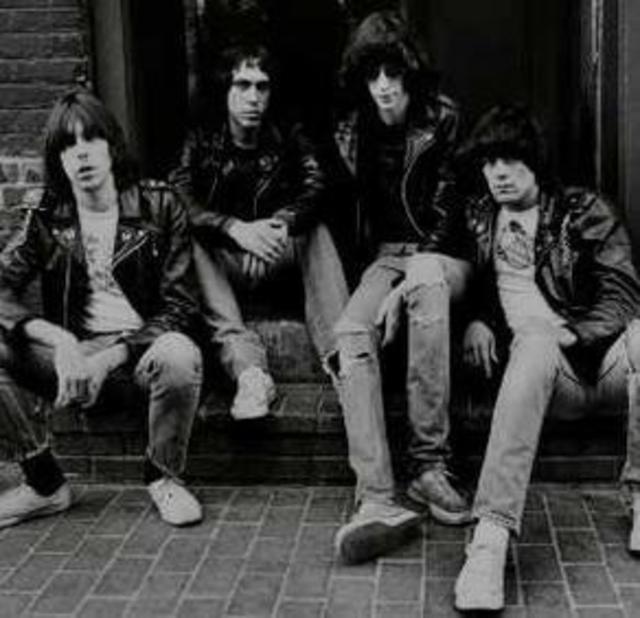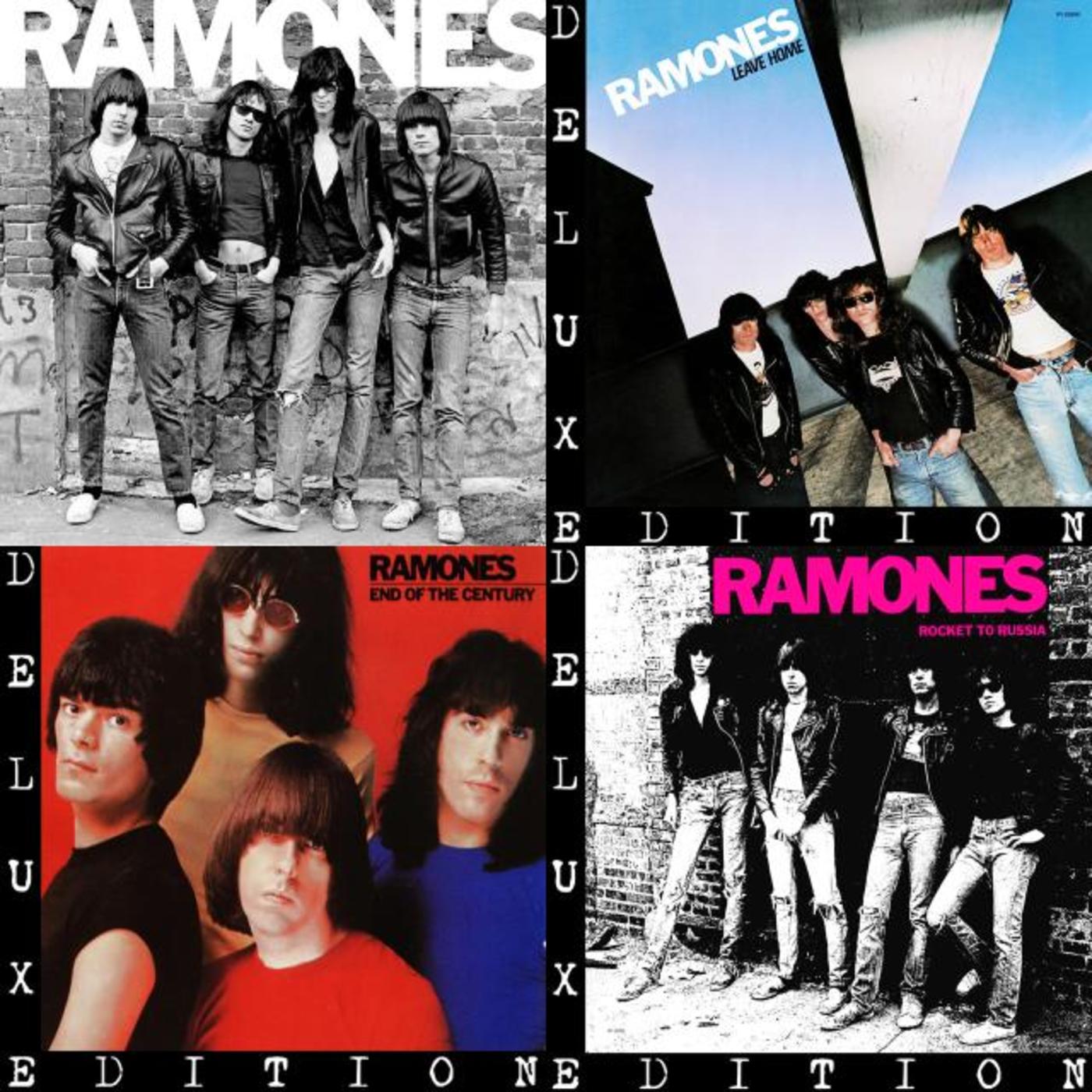Ramones

The Ramones revitalized rock and roll at one of its lowest ebbs, infusing it with punk energy, brash attitude and a loud, fast new sound. When the punk-rock quartet from Queens hit the street in 1976 with their self-titled first album, the rock scene in general had become somewhat bloated and narcissistic. The Ramones got back to basics: simple, speedy, stripped-down rock and roll songs. Voice, guitar, bass, drums. No makeup, no egos, no light shows, no nonsense. And though the subject matter was sometimes dark, emanating from a sullen adolescent basement of the mind, the group also brought cartoonish fun and high-energy excitement back to rock and roll. They launched the grassroots punk-rock movement in New York and London – the Clash were among those who paid heed when the Ramones first toured Britain – and helped downsize rock from arenas and stadiums to the more sensibly scaled environs of clubs and neighborhood holes-in-the-wall.The first four Ramones albums – Ramones (1976), Leave Home (1977), Rocket to Russia (1977), Road to Ruin (1978) - incited a revolution in music and lifestyle. Though the Ramones' songs might seem simple on the surface, their delightful directness came from paring away in an almost sculptural sense till nothing remained but a bone-hard, iconographic essence. Moreover, though the group revered the music of the early to mid Sixties, drawing upon the artful brevity of Top Forty radio in its heyday, they brought considerable originality to the Ramones. Guitarist Johnny Ramone strummed rapid-fire barre chords in a style that owed little in the way of influence to any other musician or group. Dee Dee Ramone introduced songs with a raw-throated countdown ("1-2-3-4") that became a group trademark, and he pounded a relentless stream of eighth notes on the bass. Drummer Tommy Ramone anchored the frantic beat with superhuman energy. Joey Ramone's vocals were woven into the high-energy fabric, becoming part of the unified collective identity that the Ramones worked hard to make appear effortless.The Ramones ignited the punk-rock movement with their eponymous 1976 debut album. The fact that punk is thriving nearly thirty years later attests to the durability and worth of the genre they helped invent. Their short, combustible songs drew from the worlds of comic books, horror films, girl groups, and garage rock. They were a loud-fast punk-pop band, mixing humor and horror in equal measure and giving their urbanized fans a way to purge all the pent-up energy that comes from living in a concrete jungle. A Ramones set, especially in the early years, rarely lasted half an hour, and they might perform fifteen or more songs during the sonic blitzkrieg. Their originals were just that – without question, they were the only group in rock history to write two songs about cretins and twenty-five that begin with some variation of the pronoun "I" – while the songs they covered were unfailingly well-chosen, including the Rivieras' "California Sun" and the Trashmen's "Surfin' Bird."Slagged by old-guard sorts who couldn't hear or didn't understand, the Ramones nonetheless connected with a youthful underground in New York, London, Los Angeles, and eventually the whole world. They never had a Top Forty hit, which seems an ironic pity since their songs possessed a melodic, hypnotic and energetic magic that would have served the stultifying AM playlists of the Seventies well. Such Ramones classics as "Blitzkrieg Bop," "Glad to See You Go," "Sheena Is a Punk Rocker," "Rockaway Beach," "I Wanna Be Sedated," "Rock 'n' Roll High School," and "Do You Remember Rock 'n' Roll Radio?" have stood the test of time, while the terrible records that clogged the Top Forty during the period the Ramones were minting these brilliant nuggets now elicit groans and mockery. As Tommy Ramone put it with no false modesty in the liner notes to the Ramones' Hey Ho Let's Go!compilation – which crammed 55 songs on two CDs – "This is art. Sometimes it doesn't sell at first. Sometimes it takes awhile for the world to catch on."The Ramones performed 2,263 concerts – roughly as many as the Grateful Dead, as ironic as that may seem - between their formation in 1974 and final show in Los Angeles on August 6, 1996. They released 21 studio, live and compilation albums over a 20-year period, almost faithfully issuing an album a year. The first four are their acknowledged classics, providing much of their live repertoire even into the Nineties. Rocket to Russia, in particular, was one of the defining releases of the punk-dominated year of 1977. End of the Century (1980) bore the distinction of being produced by the legendary Phil Spector. Later albums didn't always rise to the genre-smashing brilliance of those first four, but the Ramones were always compelling and entertaining, and albums like the defiant, metal-edged Too Tough to Die insured their relevance well into the Eighties. The Ramones have been incalculably influential not just on punk-rock but its offshoots, including speed metal and hardcore. Bands like Green Day, Offpsring and Blink-182 are inconceivable without the Ramones. The British speed-metal band Motorhead paid them tribute with a song, entitled "R.A.M.O.N.E.S.," that the Ramones themselves later recorded.Along the way, there were personnel changes. Tommy Ramone relinquished the drum kit to Marky Ramone in 1978, though he remained involved as a coproducer and group advisor through 1984's Too Tough to Die. Marky went on hiatus in 1983, replaced by Richie Ramone, and then returned in 1987. Dee Dee Ramone left in 1989, replaced by C.J. Ramone (a former Marine), though he continued to contribute material to Ramones albums all the way through their celebrated bow-out, 1995's Adios Amigos. Joey Ramone died of cancer on April 15, 2001, and the solo album he'd been working on came out in early 2002.History, it seems, has finally caught up with the Ramones. They are now hailed as one of the most influential American bands, and their music reaches more ears today than it did during those hard-working years when they were loudly going about the revolutionary business of reinventing rock and roll.

